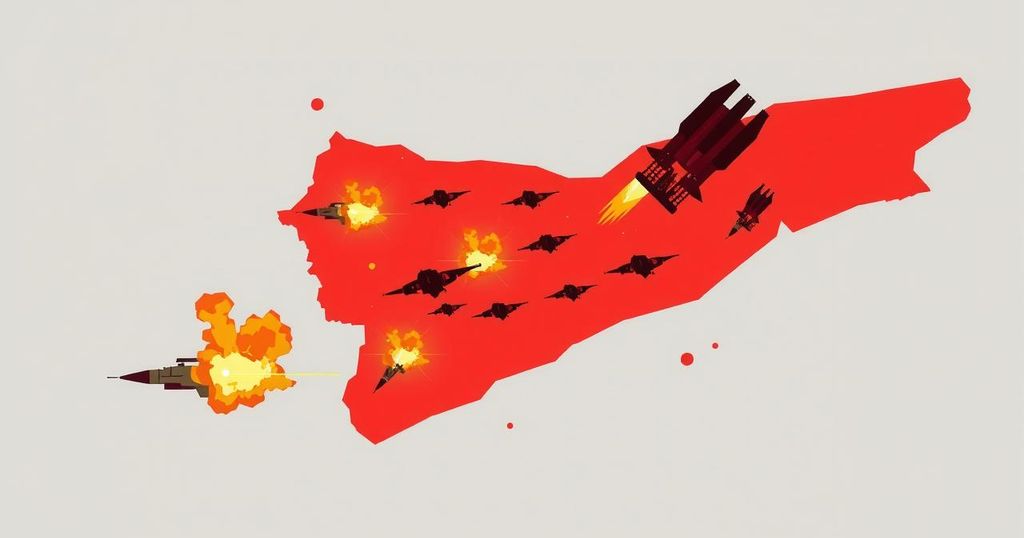Global news
AA, ABDI, AL - SHARAA, ARAB NEWS, ASIA, ASSAD, AUTONOMOUS ADMINISTRATION OF, BANIAS, CIVILIAN CASUALTIES, CIVIROGLU, CONFLICT, DAMASCUS, EUROPE, HEZBOLLAH, HUMANITARIAN CRISIS, JABLEH, LONDON, MILITARY OPERATIONS, MUTLU CIVIROGLU, NANAR HAWACH, REUTERS, SYRIA, UNITED KINGDOM, YEMEN
Isaac Bennett
0 Comments
Syria’s Interim Government and Kurdish Forces Forge Landmark Agreement Amid Violence
A significant agreement was signed between Syria’s interim government and the Kurdish-led SDF on March 10, aimed at promoting national unity, granting rights to Kurds, and integrating military forces. However, challenges persist regarding its implementation and the recent unilateral constitutional declaration. The situation remains precarious as violence continues, affecting minority communities.
On March 10, a pivotal agreement was signed between the interim government of Syria and the Kurdish-led Syrian Democratic Forces (SDF) aimed at promoting national unity within the Syrian Arab Republic. The realization of this deal remains uncertain, particularly following a recent constitutional declaration that has raised concerns.
The agreement seeks to consolidate military and civilian institutions under the governance of the Syrian state, coinciding with President Ahmad Al-Sharaa’s efforts to obtain legitimacy amidst increasing international scrutiny over militia-related violence against minority Alawites. Analyst Nanar Hawach suggests that the outcome of this deal could profoundly alter the landscape of post-war Syria.
As the deal unfolds, it is critical to note that it emerges amid significant security challenges, including recent violent incidents and external aggressions. Mutlu Civiroglu, a specialist in Kurdish affairs, indicates that this agreement could enhance Al-Sharaa’s profile as a leader who is inclusive of diverse identities within Syria’s future.
Kurdish forces, particularly those under the SDF and Autonomous Administration of North and East Syria, have denounced violent attacks on Alawites, asserting that such actions signify a systematic persecution of the country’s minorities. SDF commander Mazloum Abdi has stated that immediate intervention from Al-Sharaa is necessary to cease these atrocities.
The situation escalated dramatically on March 6, resulting in the deadliest violence since the fall of Bashar Assad, with retaliatory killings affecting both security forces and civilians alike. Reports indicate approximately 1,300 casualties, accentuating the urgent need for a solution to the ongoing violence, particularly for Alawite individuals seeking refuge.
The deal, slated for implementation by the year’s end, officially acknowledges the Kurdish community’s historical presence in Syria, securing their rights to citizenship and constitutional equitability. A cessation of hostilities in SDF territories is also mandated, following ongoing assaults from the Turkish-backed Syrian National Army.
In terms of economic implications, specific provisions ensure that the interim government gains authority over oil fields while sharing revenue with the Kurds, representing a balanced victory for both parties. The revitalization of Syria’s oil industry, crucial for national funding post-conflict, remains a priority amid forecasts indicating severe production shortfalls.
Analysts assert that the economic advantages stemming from this deal could facilitate cooperation with Damascus against extremist factions, thereby enhancing governance, service delivery, and economic stability in a nation fragmented for over a decade. Notably, the agreement has garnered endorsements from the United Nations and several countries, including Saudi Arabia and France.
Despite these promising prospects, the contract’s success largely depends on resolving outstanding integration issues. While Landis highlights the necessity for military arrangements in the agreement, details regarding the specifics of SDF integration with the Syrian Defense Ministry and the management of regional forces remain unclear.
In a developing scenario, Al-Sharaa recently introduced a temporary constitution emphasizing unilateral governance. The SDF’s political body has rejected this document due to its authoritarian tendencies, demanding a reformulation to ensure equitable power distribution and the advocacy for minority rights. This ongoing dialogue signifies the complexities surrounding ethnic and political integration within Syria.
In summary, the agreement between the Syrian interim government and the Syrian Democratic Forces represents a crucial attempt to unify Syria amidst ongoing violence and instability. While the deal promises recognition and rights for the Kurdish community, its success remains contingent upon resolving various integration challenges and addressing the recent constitutional declaration’s implications. The broader potential for national reconciliation and economic revitalization hinges on how effectively these parties navigate their complexities.
Original Source: www.arabnews.com




Post Comment